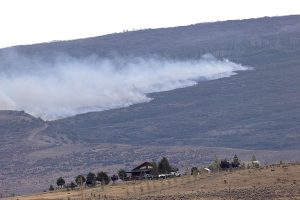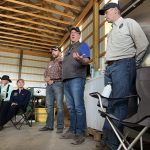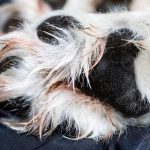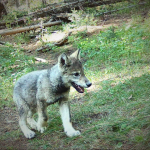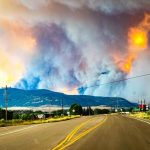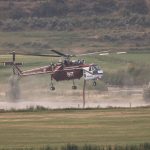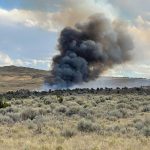Colorado’s bald eagle population has been making a comeback. Here’s how it happened.

John F. Russell/Steamboat Pilot & Today
Colorado’s bald eagle population is thriving.
After dwindling to three or four nests in the 1970s, there are now estimated to be over 300 nests across the state. In the last decade, this growth has accelerated with the population more than doubling since 2015, according to Reesa Conrey, Colorado Parks and Wildlife’s avian researcher.
The comeback of bald eagles in Colorado has been the result of both natural recovery and targeted efforts.
The bird’s demise in the United States began around 40 years ago, driven by habitat destruction, illegal hunting, and most significantly, contamination of its food source and reproductive failure caused by the widespread use of the insecticide DDT following World War II.
Specifically, the insecticide “made eggshells thinner so that when birds tried to incubate, they crushed their eggs,” Conrey said.
The impact was famously documented in Rachel Carson’s “Silent Spring,” a book that spurred the federal government to ban DDT and related pesticides in 1972.
In the 1990s, Colorado’s bald eagle populations began to grow as the human population did, Conrey said.
This growth of bald eagles in the state mirrors the bird’s nationwide recovery. In 2007, it was delisted from the federal Endangered Species Act after being classified as endangered in 1978 across the lower 48 states. The species has recovered from an estimated 417 nesting pairs in 1963 to over 71,000 in 2019, according to the U.S. Fish and Wildlife Service.
“There might have been a natural recovery from DDT after that insecticide was banned in the ’70s,” Conrey said. “At the same time, you had other things going on.”
This included federal protections under the Bald and Golden Eagle Protection Act and the Migratory Bird Treaty Act. These laws, which continue to guide management and monitoring of the species, were enacted in 1940 and 1918 and have both seen several updates.
In Colorado, habitat discovery and exploration may have also had a positive impact on bald eagles, Conrey said.
“We also know that this used to be a much drier environment than it is now. Around the turn of the last century, so around 1890 and 1920, there was a lot of reservoir construction in Colorado,” she said. “So part of the recovery could be explained by eagles, just over the decades, discovering those water resources. Clearly, we have adequate habitat for bald eagles.”
Over the last decade, as bald eagles have recovered, Conrey hypothesized that it was both a “natural continuation of what had begun once DDT was banned” and “that the population grew to a point where that growth was able to accelerate.”
What we know about Colorado’s bald eagle population today

Colorado Parks and Wildlife, with the help of partners, has increased its monitoring efforts over the years to track bald eagle nests and learn more about the raptors.
“I wouldn’t say that the research has contributed to population growth of bald eagles, although it’s certainly contributing to our understanding of what’s perhaps driving that growth and how eagles are using habitat, particularly in the northern Front Range where we have a human population that’s also rapidly expanding,” Conrey said.
This research has included tagging bald eagles as well as support from the Bird Conservancy of the Rockies’ Bald Eagle Watch program.
Matt Smith, an avian ecologist for the Bird Conservancy, runs this nest monitoring program, which relies on volunteers across the state to collect data on nest success and productivity. The program started in 1988 monitoring one bald eagle nest at Barr Lake State Park in Brighton. Today, the volunteers monitor over 200 nests across Colorado.
“Over time, we’ve adapted the kind of data that we’re collecting to be most useful for the kind of research that (Parks and Wildlife is) working on,” Smith said.
Most recently, this has included keeping track of conditions around the nest to identify “how changes in land use may affect bald eagle nest site selection and overall success and the productivity,” Smith added.

With recent research, Parks and Wildlife has expanded its understanding of bald eagle habitat, specifically how large or small their home ranges can be and how development impacts the species, Conrey said.
Colorado is home to both migratory, “wintering” populations of bald eagles and those that stick around all year, Conrey said.
“They seem to be finding these pockets of natural areas that are suitable for them within areas with more human development,” Conrey said, adding that they are keying in on these areas with open water, riparian habitat, a good food source, open canopy forests, cottonwoods and low to moderate human development.
Bald eagle nests reach around the same length as the eagle’s wingspan: between 7 and 8 feet. Most Colorado nests are placed in cottonwood trees and most eagles will return to the same territory year after year to nest, but often build more than one nest in that area for reasons currently unknown, Smith said.
With the migrating raptors, this can lead to what Smith referred to as “communal roosting areas,” where anywhere from 10 to 100 bald eagles of all ages will gather during the wintertime.
In addition to rapidly growing populations, bald eagles have relatively high nest survival in the state, Conrey said.
Over time, Smith said they’ve noticed bald eagles “appear to be more resilient and tolerant to nesting in more developed areas than they have been in the past.”
“That’s not to say that they’re not still vulnerable to human-caused disturbances, but we see them choosing nests in places where there’s already significant human activity,” Smith added. “The infrastructure by itself seems to have become less of a problem, but there’s still quite a bit of concern about the way the habitat changes as a result of (development) and whether it leaves a viable territory for prairie dogs to occupy.”

In general, the adaptability in terms of what bald eagles eat and where they live has likely contributed to the success, Conrey said.
Bald eagles are opportunistic hunters.
“They will hunt, steal, or scavenge for a wide variety of food,” Conrey said, listing fish, prairie dogs and rabbits among their prey.
“One of their favorite ways of acquiring is waiting for an osprey to catch a fish and then stealing it from them,” Smith said. “Ospreys are very efficient at catching fish — more so than bald eagles, even though they can do it on their own — (eagles) often find it easier to bully another bird out of the fish.”
Despite success, bald eagles are still facing some threats. Parks and Wildlife reported that electrocutions, vehicle collisions and disease cause the most mortalities. Bald eagles were impacted by avian flu in 2022 and West Nile virus in 2024.
Lead poisoning of both bald and golden eagles is also a threat to both species in Colorado, according to the state wildlife agency. Smith said that this has been tied to their scavenging when they eat the remnants of animals left by human hunters using lead bullets.
A success among a species with conservation needs

As Parks and Wildlife conducts its 10-year inventory of species to identify those at risk, bald eagles are lauded as one of Colorado’s successes since 2015.
The process is one component of its State Wildlife Action Plan, also known as SWAP, which states are required to create wildlife action plans every decade to remain eligible for federal funding under the U.S. Fish and Wildlife Service’s State and Tribal Wildlife Grant program. Parks and Wildlife uses it to guide conservation efforts around the most vulnerable species and habitats.
Colorado is currently in the process of revamping its 2015 plan, with the finalized version due to the Fish and Wildlife Service by September. So far, the agency has updated its list of the species in need of attention or action.
Colorado has 960 native species that the state wildlife agency has authority over. The first State Wildlife Action Plan in 2006 identified 210 species (either amphibians, birds, fish, mammals or reptiles) that were a “species of greatest conservation need.”
In making this determination, the state looks at several factors including the federal and state status as threatened or endangered, population health, urgency of conservation action, threats, how much information is known, ecological value and more. Some species are classified as such because there is a “critical need” for more information, according to the agency.
In 2015, Parks and Wildlife identified 150 species with a conservation need. In 2025, 183 had some kind of conservation need. Thirteen of these were not on the 2015 list at all.
Bald eagles were one species that transitioned off the list due to their success since 2015.
“Even though eagles are not listed as a species of greatest conservation need in our 2025 SWAP, they’ll continue to be a focus for us,” Conrey said.

Support Local Journalism

Support Local Journalism
Readers around Steamboat and Routt County make the Steamboat Pilot & Today’s work possible. Your financial contribution supports our efforts to deliver quality, locally relevant journalism.
Now more than ever, your support is critical to help us keep our community informed about the evolving coronavirus pandemic and the impact it is having locally. Every contribution, however large or small, will make a difference.
Each donation will be used exclusively for the development and creation of increased news coverage.

